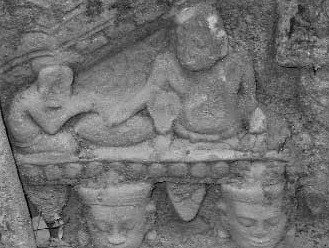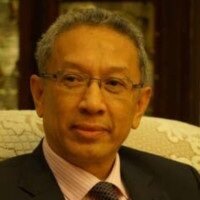Medicine and Culture in Ancient Cambodia
by Rethy Kieth Chhem
A vivid evocation of traditional medicine and healing techniques in Angkorean villages.

Publication: The Singaporte Biochemist Review, Vol. XIII
Published: March 2000
Author: Rethy Kieth Chhem
Pages: 5
Language : English
While the Angkorean elites started to turn to Ayurvedic and Tantric medicine, with their Sanskrit and Pali corpus, traditional healing practices developed in humble villages.
The author vividly recalls this 'folk medicine' of lore, in which kru (medicine man) and patients communicated in Old Khmer (Kham language). The oral transmission of medicinal preparations and techniques was later on written down on palm leaf manuscripts, sastras, which were still available to healers in the late 19th century.
Astrology was an important inspiration for these popular healing practices. Interestingly, the '7' number was held as particularly auspicious -- like in Semitic traditions --, later on eclipsed by the '3' or '8', probably a Chinese influence.
We also have evidence of the widespread use of tattoos as a sacred and prophylactic art, with Pali or old Khmer words and geometric figures.
Photo: A healer on a fallen pediment at Angkor Thom Hospital, possibly checking the patient's pulse. (photo Rethy Chhem)
About the palm leaf manuscript technique still in use in Cambodia, read here.
Tags: medicine, khmer rituals, healthcare, daily life, kham language, astrology, tattoos, sastra
About the Author

Rethy Kieth Chhem
Dr Rethy Chhem (1952, Phnom Penh) is a medical doctor, biomedical scientist, science diplomat, historian of medicine and educationalist He has been a professor of radiology for 28 years, teaching in Canada, Singapore, Austria and Japan.
Dr Chhem is the Executive Director of the Cambodia Development Resource Institute (CDRI), a leading think-tank in Cambodia and the ASEAN region. In 2018, he was appointed special Health Advisor to Cambodia Prime Minister Samdech Hun Sen. He is also co-leading the Angkor Medieval Hospitals Archaeological Project.
He was the Chairman of the Medical Imaging Department at Western University (Canada) before joining the International Atomic Energy Agency (IAEA) as Director of the Division of Human Health (2008-2014). He has published more than 100 scientific articles, and edited 17 textbooks on radiology, radiology education, paleoradiology, philosophy of medical imaging and radiation sciences, with two on the Fukushima nuclear accident. He was a distinguished visiting professor at the Atomic Bomb Disease Institute, Nagasaki, Hiroshima and Fukushima Medical University.
Narrowly escaping the Khmer Rouge after his parents and two siblings were killed during the civil war, he graduated in France, then obtained a scholarship at University of California, San Francisco, and moved to McGill University in Canada.
His involvement with Angkorian research started in 2000, when French archaeologist Christophe Pottier asked for his expertise while excavating the site of the 8th-century Prey Khmeng temple in Siem Reap province, and was looking for an expert to do a preliminary study on them. Dr Chhem analyzed the skeletons recovered on that site, performing CT scans on them. This contribution triggered his interest in pre-Angkorian and Angkorian medicine.
After joining the excavation of one of the one of the 102 hospitals that King Jayavarman VII (1181-1218) ordered to be built in the late 12th century, Dr Chhem established the existence of a comprehensive, free state healthcare system within the Khmer Empire.
